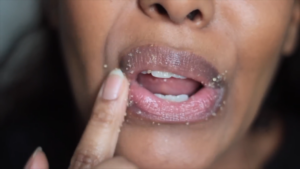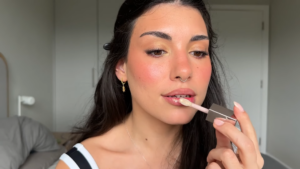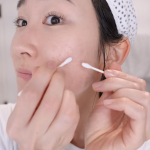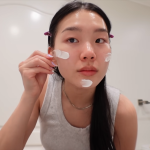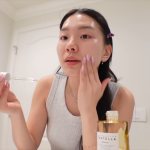Dry and chapped lips are not only annoying but can also be quite painful. However, there’s a simple solution—you can create your own natural lip balm at home using safe and effective ingredients. By using common items like coconut oil, shea butter, and beeswax, you can tailor your lip balm to suit your needs without worrying about harmful additives. Natural lip balms provide deep moisturization, soothing relief, and protection against environmental factors. This DIY approach not only ensures your lips stay hydrated and smooth but also allows you to avoid synthetic chemicals often found in commercial products, promoting healthier and happier lips naturally.
Benefits of Natural Lip Balm
Moisturizing
Natural lip balms are formulated with a variety of moisturizing ingredients that work together to keep your lips soft and hydrated. Key components such as coconut oil, shea butter, and beeswax play a crucial role in this process. Coconut oil is known for its excellent hydrating properties and its ability to penetrate the skin quickly, providing deep moisture. Shea butter, rich in vitamins A and E, not only moisturizes but also soothes and repairs the skin, making it an ideal ingredient for combating dryness. Beeswax, on the other hand, creates a protective barrier on the lips, sealing in moisture and shielding them from harsh environmental elements. Together, these natural ingredients ensure that your lips remain supple, smooth, and free from the discomfort of dryness.
Protecting
Natural lip balm forms a protective layer over the lips, effectively shielding them from a variety of harsh environmental factors. This protective barrier is particularly crucial in preventing damage caused by wind, which can strip the lips of their natural moisture, leading to dryness and chapping. In cold weather, the balm acts as an insulating layer, safeguarding the delicate skin of the lips from the drying effects of low temperatures. Additionally, when exposed to sunlight, a natural lip balm can provide some degree of protection against the harmful effects of UV rays, although for full sun protection, a balm with added SPF is recommended. By maintaining this protective layer, natural lip balms help ensure that the lips stay healthy, hydrated, and comfortable, regardless of the weather conditions.
Healing
Some natural ingredients, like honey and tea tree oil, offer powerful antibacterial and anti-inflammatory properties that can significantly aid in healing chapped lips and minor wounds. Honey, renowned for its antimicrobial qualities, not only helps prevent infection but also promotes faster healing by keeping the affected area moist and reducing inflammation. Its natural enzymes and nutrients nourish the skin, accelerating the repair process. Similarly, tea tree oil, with its strong antiseptic properties, combats bacteria and reduces swelling, providing relief from the pain and discomfort associated with chapped lips. When incorporated into a natural lip balm, these ingredients work synergistically to soothe irritated skin, promote healing, and restore the lips to a healthy, smooth condition. By harnessing the healing powers of honey and tea tree oil, natural lip balms can offer more than just moisture—they provide therapeutic benefits that address both the symptoms and causes of lip damage.
Chemical-Free
Natural lip balms are free from harsh chemicals and preservatives, making them an excellent choice for individuals with sensitive lips. Many commercial lip balms contain synthetic ingredients, such as parabens, artificial fragrances, and petrochemicals, which can cause irritation, allergic reactions, or even long-term damage to the delicate skin on the lips. In contrast, natural lip balms rely on gentle, nourishing ingredients derived from nature, such as plant oils, beeswax, and essential oils, which are less likely to trigger adverse reactions. This makes natural lip balms a safer and more soothing option for maintaining lip health. By avoiding these potentially harmful additives, natural lip balms ensure that even the most sensitive lips are protected, moisturized, and free from irritation, providing a pure and effective solution for daily lip care.
Eco-Friendly
Natural lip balms are usually made with sustainable and eco-friendly ingredients, emphasizing a commitment to both environmental responsibility and personal well-being. These ingredients often come from renewable resources, such as plant-based oils, beeswax, and shea butter, which are harvested without harming the environment. The production processes for these balms prioritize eco-friendly practices, minimizing waste and reducing carbon footprints. Unlike conventional lip balms that may contain petrochemicals and synthetic additives, natural lip balms use biodegradable, non-toxic components, ensuring they are safe for both the user and the planet. By choosing natural lip balms, consumers support sustainability while enjoying effective, gentle lip care.
Materials Needed
- 1/4 cup coconut oil
- 1/4 cup shea butter
- 1/4 cup beeswax
- 10 drops essential oil (optional)
Required Equipment
- Double boiler or microwave
- Wooden spoon or spatula
- Lip balm container
- Label (optional)
Manufacturing Instructions
Double Boiler Pot Method
- Fill the bottom pot with water and bring to a boil.
- Place the top pot on top of the bottom pot, ensuring the water does not touch the bottom of the top pot.
- Place the coconut oil, shea butter, and beeswax in the top saucepan.
- Keep stirring until the ingredients melt and mix well.
- Remove from heat and add essential oil (if desired).
- Stir well and pour into the lip balm container.
Microwave Method
- Place the coconut oil, shea butter, and beeswax in a microwave-safe bowl.
- Microwave at 30-second intervals, stirring in between intervals, until ingredients are melted and mixed well.
- Add essential oil (if desired) and stir well.
- Pour into the lip balm container.
Tips
- For a harder lip balm, use more beeswax.
- For a softer lip balm, use more coconut oil.
- You can add other essential oils to taste, such as lavender, peppermint, or vanilla.
- Store lip balm in a cool, dry place.
- Natural lip balm usually lasts up to 6 months.
Variations
Colored Lip Balm
To add a touch of natural color to your homemade lip balm, consider incorporating a small amount of beetroot powder or cocoa powder. Beetroot powder offers a vibrant, reddish hue, giving your lips a healthy, rosy tint while also providing beneficial antioxidants. On the other hand, cocoa powder imparts a rich, warm brown shade, ideal for a more subtle, earthy tone. Both options not only enhance the visual appeal of your lip balm but also contribute additional nutrients and natural flavors. By using these natural colorants, you can customize your lip balm to match your personal style while ensuring it remains chemical-free and nourishing.
Scented Lip Balm
Enhance your homemade lip balm by adding your favorite essential oils to create a delightful and personalized scent. Essential oils such as lavender, peppermint, or vanilla not only provide a pleasing aroma but also offer additional benefits. Lavender oil can have a calming effect, peppermint oil provides a refreshing and cooling sensation, and vanilla oil offers a sweet, comforting fragrance. By incorporating essential oils, you can tailor your lip balm to suit your mood and preferences, making the application experience more enjoyable. Additionally, these natural fragrances can have aromatherapeutic properties, enhancing your overall well-being while keeping your lips moisturized and healthy.
SPF Lip Balm
For added sun protection in your homemade lip balm, consider incorporating a small amount of zinc oxide or titanium dioxide. These mineral-based ingredients act as physical barriers against harmful UV rays, helping to prevent sunburn and damage to your lips. Zinc oxide and titanium dioxide are known for their broad-spectrum protection, shielding against both UVA and UVB rays effectively. By including these natural minerals, you can ensure that your lip balm provides a level of sun protection while maintaining its gentle and non-irritating properties. This addition is particularly beneficial for outdoor activities or daily use in sunny climates, offering peace of mind along with moisturized lips.
Exfoliating Lip Balm
To enhance your homemade lip balm’s exfoliating properties, consider adding a small amount of sugar or sea salt. These natural exfoliants gently slough off dead skin cells, leaving your lips smoother and softer. Sugar particles are finer and dissolve easily, making them suitable for sensitive lips, while sea salt provides a coarser exfoliation for tougher skin. Both ingredients stimulate circulation and promote cell renewal, improving the overall texture of your lips. By incorporating sugar or sea salt into your lip balm, you can create a nourishing treatment that not only moisturizes but also rejuvenates, helping to maintain healthy and supple lips year-round.
Conclusion
Making your own natural lip balm at home is an easy and cost-effective way to keep your lips healthy and moisturized. By using simple and safe ingredients, you can create lip balm tailored to your needs and preferences. Enjoy soft, smooth, and protected lips with your own homemade natural lip balm.


